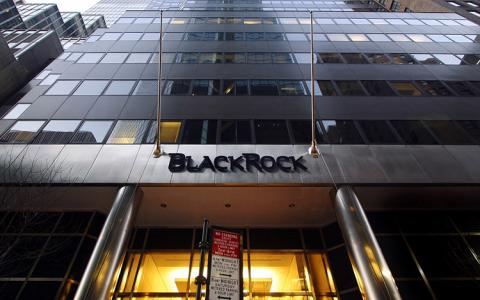
BlackRock will remain pro-risk as the “powerful restart of economic activity” broadens around the world, according to the 2021 BlackRock Investment Institute (BII) Midyear Outlook. The investment manager also announced key revisions to its strategy, mainly attributable to a strong Chinese bounce-back and low bond yield rates relative to inflation.
“At the end of the day, we see this environment as one that is still conducive to taking risks,” Jean Boivin, head of BII, said at the company's virtual media roundtable on Wednesday. “So we have a pro-risk stance that continues. But the way of taking that risk is evolving. And this evolution is mainly driven by the broadening of the restart.”
BII Outlooks are released biannually—at the middle and end of each calendar year—and detail BlackRock’s strategies and tactics surrounding various global asset classes. They are designed to help investors navigate uncertainty and understand the investment manager’s longer term strategic investment horizon.
In regard to potential paths and outcomes for global markets moving forward, Vice Chairman Philipp Hildebrand said that a consensus is far from being reached.
“I have to tell you that probably in all my career, including my time in the public sector, I don't really recall a time when discussions on the outlook have been so wide-ranging both inside our firm, but also, of course, more broadly in the marketplace,” Hildebrand said.
BlackRock cited a “broadening economic restart,” coupled with global central banks' "resolve to maintain easy financial conditions” as being the main reasons for why they maintain a moderately pro-risk position. The Outlook report stated that BlackRock favors equities over credit and government bonds on both a strategic and tactical investment horizon, and is adding to their underweight on U.S. Treasuries in favor of Chinese government bonds and other Asian fixed income due to higher yields and interest rate stability.
In the same vein, the report views China as a major pillar of global growth, as the country has pulled through the pandemic shock “stronger than global peers,” as it did following the recession in 2008. China quickly surpassed its pre-pandemic growth trend, with Beijing making efforts to make the country a more attractive hub for investment and reduce risk.
“China has seen a surge of inward investment that began last year, partly due to investors seeking positive real yields not available in the DM world,” the report stated. “This is what we call China’s quality revolution—prioritizing the quality of growth over quantity—and it ties in directly with its ambitions to reach net-zero emissions by 2060.”
'The new nominal'
Although the economy is “nearing peak inflation” according to Oxford Economics Chief U.S. Economist Greg Daco, U.S. Treasury yields continue to remain low as the Fed adopts a more muted monetary response than in the past to counteract the rising prices. BlackRock’s report refers to this as the “new nominal,” a phenomenon in which government bond yields are less sensitive than in the past to higher inflation expectations and actual inflation, keeping nominal long term yields low and real yields negative.
“Despite being questioned, this narrative has largely unfolded in 2021: the rise in long-term yields has been mainly driven by higher market pricing of inflation, with real yields remaining pinned well in negative territory,” the report reads.
BlackRock expects the Fed to start normalizing policy rates in 2023, a slower pace than indicated by market pricing for lift-off in 2022. The report states that the market’s lack of confidence in the Fed’s commitment to its new framework “poses a risk of tighter financial conditions in the short term,” with this uncertainty expected to dissipate over time.
“We see the policy response to rising inflation to be a lot more muted this time around compared with previous cycles and lift off is still a long way away,” Global Chief Investment Strategist Wei Li said. “So this is when we turn to the new nominal theme. And the combination of this trend growth and very negative real rates is a potent mix that keeps us pro-risk.”
This article originally appeared on Yahoo! Finance.



